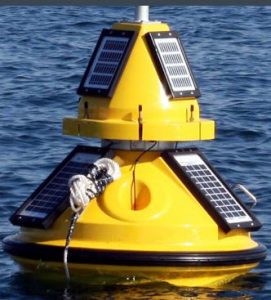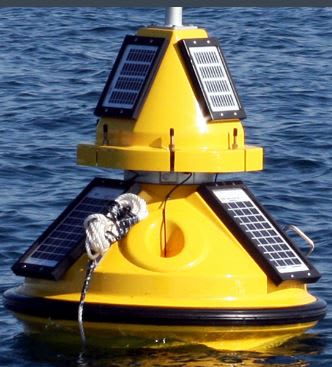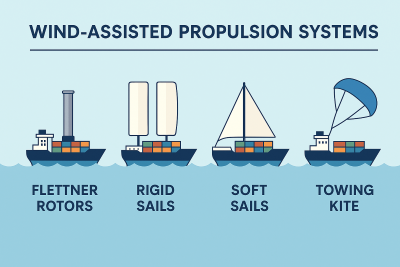Solar Buoys and Autonomous Ocean Monitoring
How Solar-Powered Buoys Are Revolutionizing Ocean Observation
In contemporary marine technology, solar buoys and autonomous maritime monitoring are emerging as transformative innovations. These intelligent, solar-powered instruments are fundamentally altering the methodologies employed for oceanic monitoring, maritime activity tracking, and the safeguarding of marine ecosystems, all while minimizing human involvement and operational expenditures.
However, what precisely constitutes solar buoys? What operational mechanisms do they employ? And what factors contribute to their increasing significance in maritime operations, environmental science, and national security?
Let us explore this topic further.
What Are Solar Buoys?

Upon initial observation, solar buoys may appear to be mere floating markers; however, a deeper examination reveals a plethora of advanced features—both literally and metaphorically. These sophisticated buoys are outfitted with solar panels, batteries, communication systems, and sensors meticulously engineered to capture and relay real-time data.
Consider them as diminutive, floating laboratories. They possess the capability to quantify:
- Sea temperature
- Salinity
- Wave height and direction
- Wind speed
- Ocean currents
- Subaqueous acoustic levels
- Marine traffic movement (via AIS systems)
Most critically, they execute all these functions autonomously, deriving their energy entirely from solar sources.
How Solar Buoys Work?
Central to the operation of a solar buoy is a straightforward yet potent principle: the utilization of solar energy to facilitate autonomous oceanic surveillance.
Here is a concise delineation:
- Solar panels affixed to the buoy capture solar radiation and recharge onboard batteries.
- Sensors and instruments aggregate environmental and oceanographic metrics.
- Communication modules (such as satellite or cellular) convey the data to shore-based stations or cloud computing platforms.
- Autonomous software can initiate alerts, modify measurement intervals, or even identify anomalies such as oil spills or illicit fishing activities.
Through this configuration, solar buoys are capable of functioning continuously for extended periods in term of months, or even years without necessitating human maintenance.
Applications of Autonomous Maritime Surveillance
Ranging from shipping routes to scientific inquiry, the utilization of solar buoys encompasses a remarkably wide array of applications. Below are some of the most persuasive use cases:
-
Environmental Surveillance
A primary function of solar buoys is the observation of environmental alterations. They furnish critical data for:
- Climate research through the assessment of sea surface temperature and CO₂ concentrations.
- Marine biodiversity studies, including the monitoring of plankton populations or migratory species.
- Early warning systems for meteorological phenomena, tsunamis, or harmful algal proliferations.
As oceans increasingly confront pressures from climate change, autonomous monitoring enables scientists to respond more swiftly and with enhanced data quality.
-
Oil and Gas Industry
Energy corporations utilize solar buoys to:
- Oversee offshore drilling environments Facilitate early detection of oil spills Ensure adherence to environmental regulations
- These buoys serve as vigilant sentinels, mitigating the potential for catastrophes akin to the Deepwater Horizon incident.
-
Maritime Security and Defense
Naval forces and coast guard agencies deploy solar-powered buoys for:
- Vessel monitoring employing Automatic Identification System (AIS) Identifying unauthorized maritime activities Surveillance of underwater acoustics for submarines or illegal dredging operations
- They represent a discreet yet formidable resource in the protection of territorial waters.
-
Fisheries Management
Illegal, unreported, and unregulated (IUU) fishing constitutes a global challenge. Solar buoys can contribute to addressing this issue by:
- Monitoring fishing vessels Observing designated fishing areas Detecting violations of sustainable fishing protocols
- By aggregating real-time data, they facilitate enhanced enforcement and the promotion of sustainable harvesting practices.
-
Intelligent Ports and Shipping
As global maritime trade becomes more digitized, smart buoys are becoming increasingly important. Within ports, they can:
- Assess water quality
- Monitor ship movements
- Aid in navigation during low visibility conditions
These buoys are crucial for establishing smart port ecosystems that prioritize efficiency, safety, and environmental stewardship.
Advantages of Using Solar Buoys
If you’re curious about why solar buoys are so groundbreaking, let’s explore their primary benefits:
- Eco-Friendly Energy Utilizing solar power eliminates dependence on fossil fuels or manual recharging, resulting in reduced emissions and lower operational expenses.
- Continuous Autonomous Monitoring Once installed, these buoys function continuously without the need for constant human supervision.
- Instant Data Accessibility Immediate data transmission enables quicker decision-making and more effective responses.
- Minimal Maintenance and Extended Lifespan Due to robust materials and remote monitoring capabilities, maintenance visits are infrequent.
- Scalable and Economical Solar buoys are relatively affordable compared to manned observation stations or research vessels.
Challenges and Considerations
Naturally, every technology has its challenges. Some significant hurdles in deploying solar buoys include:
- Harsh Marine Conditions Corrosion from saltwater, strong currents, and storms can damage equipment if not adequately shielded.
- Limited Sunlight Availability In high-latitude or overcast areas, solar energy generation may be sporadic.
- Data Security and Connectivity Issues Transmitting information via satellite or cellular networks raises concerns regarding hacking and signal loss.
Nevertheless, as technology progresses, these challenges are being gradually addressed through improved materials, AI-enhanced monitoring, and hybrid energy solutions.
Looking Ahead: The Future of Maritime Monitoring
The Future of Maritime Surveillance
- The outlook for solar buoys and autonomous maritime surveillance is optimistic both- literally and metaphorically.
- Emerging technologies such as machine learning, IoT integration, and edge computing are enhancing the intelligence, speed, and adaptability of these systems.
- Envision fleets of solar buoys creating a “smart net” across the oceans—exchanging data, identifying threats, assisting vessels, and contributing to marine conservation initiatives. We are approaching that vision.
As environmental concerns escalate and the need for real-time information intensifies, solar buoys will become essential tools for governments, industries, and researchers alike.
Final Thoughts
In a world increasingly reliant on our oceans, the capacity to monitor them sustainably and intelligently is vital. Solar buoys present a powerful, scalable solution—quietly collecting crucial data, day and night, fueled solely by the sun. Whether you’re a marine researcher, a port manager, or simply an ocean enthusiast, these autonomous wonders deserve your attention. The future of ocean monitoring is already upon us—and it’s floating just offshore.



